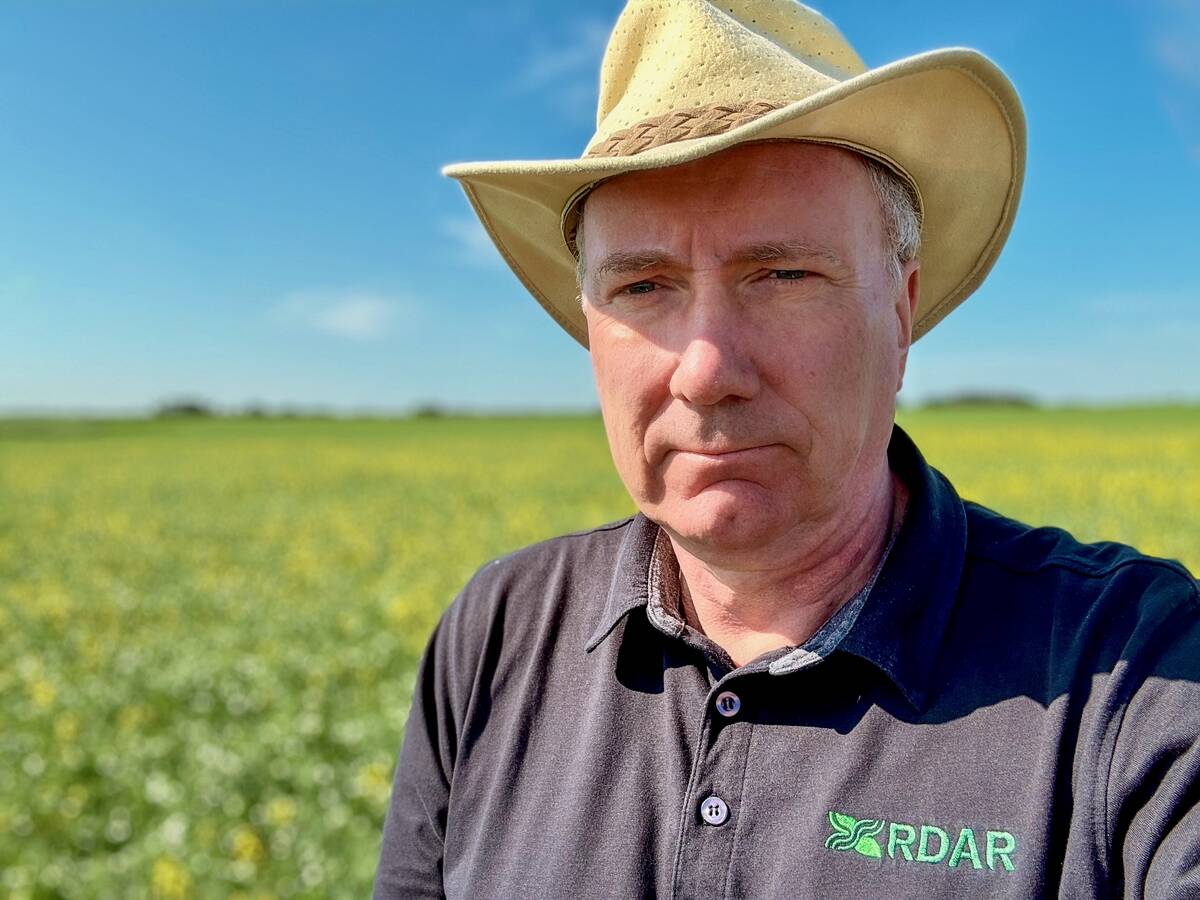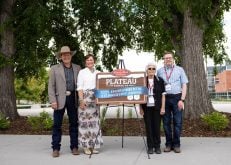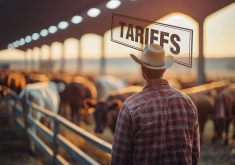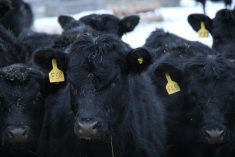It’s become a nightmare scenario.
Thousands of workers at meat-packing facilities across North America, including Alberta’s three beef plants, have contracted COVID-19 — and the resulting closures and production slowdowns have created a crisis for livestock producers.
But is there any way out?

“This will renew calls for more packing capacity in Canada,” said Mike von Massow, a food economist with the University of Guelph.
“It’s no consolation to someone who is sitting on cattle that we’re continuing to get meat into the grocery store because of our North American integrated system. Without a doubt, we will see more of a call for diversification in processing.”
In fact, those calls are already being made.
When Cargill announced last month that it was temporarily closing down its High River facility, the National Farmers Union called beef packing “one of the weakest links in Canada’s food system.” Noting that, that plant and the JBS facility at Brooks process nearly three-quarters of the country’s beef, the farm group said Canada, and cattle producers, need “packing plants (that) are spread across the nation.”
Read Also

RDAR continues to become more relevant and useful to producers five years after its inception
RDAR has already amassed a strong resume five years after its inception.
But if history is any guide, that’s not in the cards, said von Massow.
“We’ve seen the rise of some alternatives to these big packers that have come and, unfortunately, gone,” he said, pointing to the Natural Valley Farms processing plant in Saskatchewan and Rancher’s Beef plant at Balzac, which both opened after BSE and then shuttered a few years later.
New processing plants are not only very expensive to build but challenging to operate, said food systems expert Sylvain Charlebois.
“Starting a packing plant is not easy — you need inputs, you need good skilled management and you need to understand your customers in the markets,” said the Dalhousie University professor and director of the Agri-Food Analytics Lab.
You also need workers, and that’s another huge challenge as the meat-packing industry relies heavily on temporary foreign workers and new immigrants. While plants located in rural areas have been successful in bringing in these workers, any new plant would likely need to be built near an urban area, and that creates its own challenges, said von Massow.
“Vulnerability becomes a factor,” he said. “It’s not just about the people in the plant, but getting people to the plant, that has become an issue.”
While some, including the NFU, are calling for a network of smaller regional packing plants, that’s not a workable strategy, both experts said.
“I don’t think packing capacity in terms of a bunch of small regional abattoirs is the way to deal with it,” said von Massow. “The reason we don’t have those plants is because they are less competitive.”
Even the entire Canadian market is relatively small and so processing plants need to have sufficient scale in order to have some exposure to international markets as part of their business plan, added Charlebois.
“In Canada, we think about ourselves. We can’t afford to do that,” he said.
The pandemic has also brought a whole new issue to the fore.
“We haven’t had to significantly think about things like disease transmission,” said von Massow. “We will need to think more holistically about worker safety in these plants and that may have implications for how we structure existing plants and how we build plants in the future.”
Change needed
But while there are no quick and easy answers to preventing a repeat of the current situation, things do have to change, both experts said.
And there are factors that will drive that.
“The one thing that is going to change (because of COVID-19) is that food prices are going to go up for an extended amount of time,” said Charlebois. “This might actually give food sectors an opportunity to realign and change and decentralize a little more.”
Packers — which are under heavy fire for putting workers at risk because of inadequate protection measures — will also be motivated to change, he said.
“My guess is the industry and perhaps even governments will be looking for ways to expand the packing industry to reduce the risk,” he said. “The trade-off is always going to be cost.”
Still, the concern of disease transmission may prompt packers to accelerate the rate of automation in some plants, said von Massow.
“We’ve seen early stages of some of these things,” he said. “We’ve heard about computer grading and all of these sorts of things. These things work in tandem with things like physical distancing, which may accelerate the rate of automation in some of these plants, which happens to reduce costs.”
Ottawa also has a motive for change. The federal Liberals view increasing agri-food exports as a key driver of the economy and has set of goal of boosting exports to $75 billion by 2025.
Meat is a significant food export and “you can’t build a strong agri-food industry without strong processing,” said Charlebois. “When we have strong processing, everyone benefits — from processors, retailers, other markets and producers.”
Canada has the ability to produce high-quality commodities, and international customers like the Canadian brand.
“We haven’t been able to take advantage of that because we haven’t looked at the problem the right way, and I think it has a lot to do with processing,” he said.
The pandemic offers an opportunity to retool the meat-processing sector, but “I have no idea if stakeholders will take advantage of that,” he added.
And if that opportunity isn’t seized, the system for producing meat will remain “a highly disorganized value chain.”
“When you have the bottleneck, no one is there to grab the ball,” said Charlebois. “At the end of the day, if there is a bottleneck, who pays? The farmers. Always.”
















